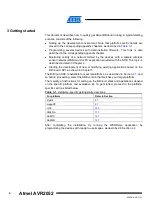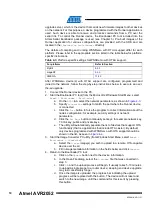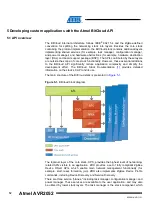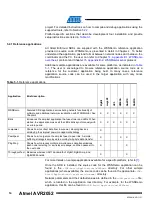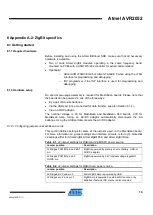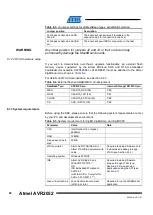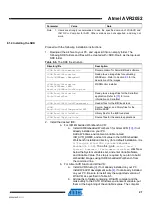
Atmel AVR2052
7
8200M-AVR-11/11
4.4 Network startup
The coordinator organizes the wireless network automatically. Upon starting, every
node informs the network of its role.
When the coordinator is powered on, it switches to an active state even though no
child node is present. This is normal, and it indicates that the coordinator is ready and
that child nodes can join the network with the coordinator’s extended PAN ID. By
default, the coordinator uses extended PAN ID
0xAAAAAAAAAAAAAAAA
, which is
recognized by all routers. A short PAN ID is chosen at random. The extended PAN ID
can be modified by the user through the application’s
configuration.h
file.
NOTE
If the coordinator is absent or has not been turned on, the routers and end devices
will remain in the network search mode. In this mode, routers scan the channels
specified in the channel mask in search of a network with the specified extended PAN
ID.
By default, the channel mask for all application images provided with the SDK
contains a single channel. In rare cases, if the frequency corresponding to the radio
channel is busy, the coordinator node may stay in the network search mode. If this
happens, it may become necessary to change the application’s channel mask to
select another channel by changing the application’s
configuration.h
file and
recompiling the application.
Network health can be monitored by looking at the individual node’s LED state (LED
states are platform specific, and are described in platform-specific sections noted in
) or through the WSNMonitor application described in the next section.
4.5 WSNMonitor
WSNMonitor is a PC counterpart to the WSNDemo embedded application, and can
be used to display ZigBee network topology and other information about a wireless
sensor network. A typical WSNMonitor screen is shown in
. It contains
topology, sensor data, and node data panes and application toolbars.




